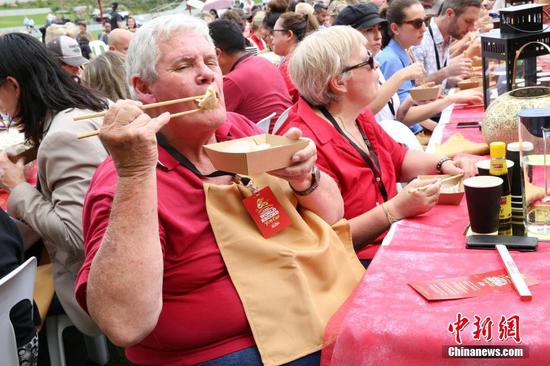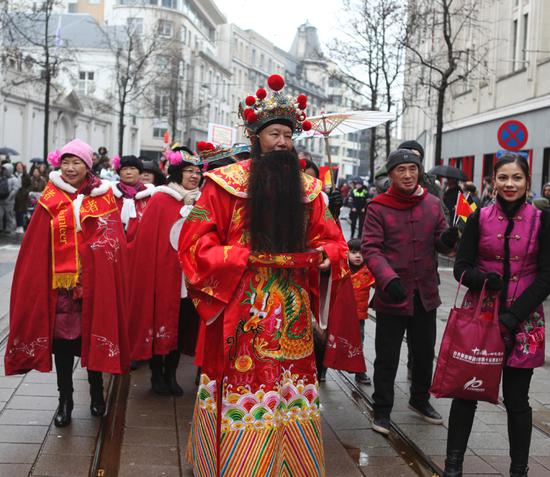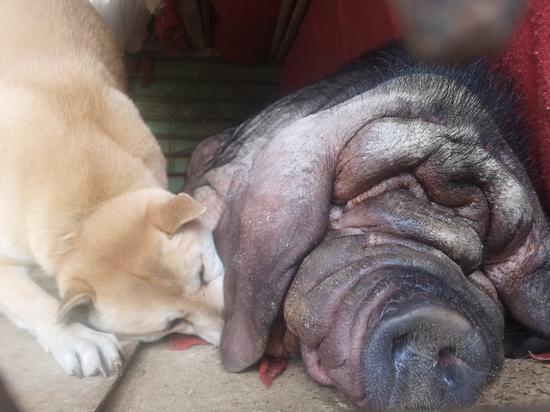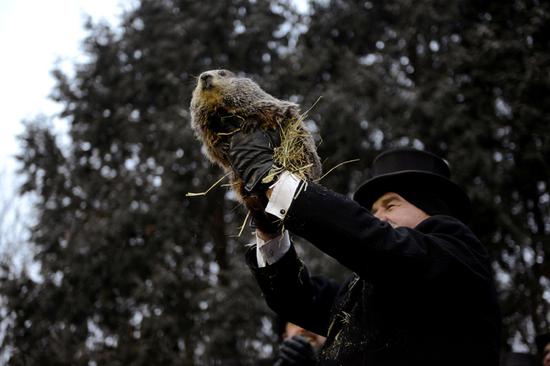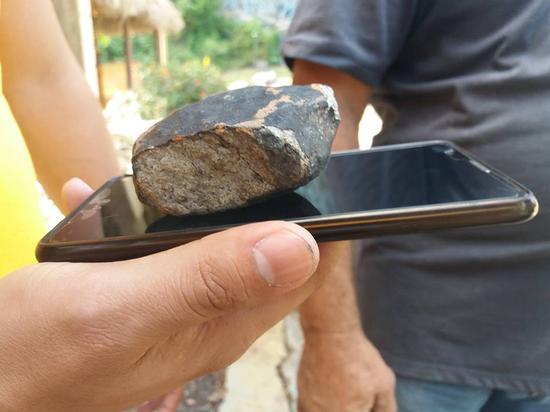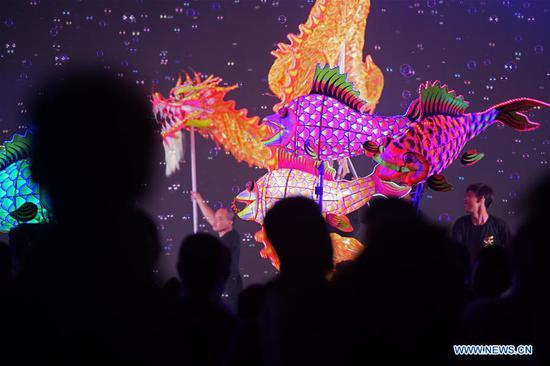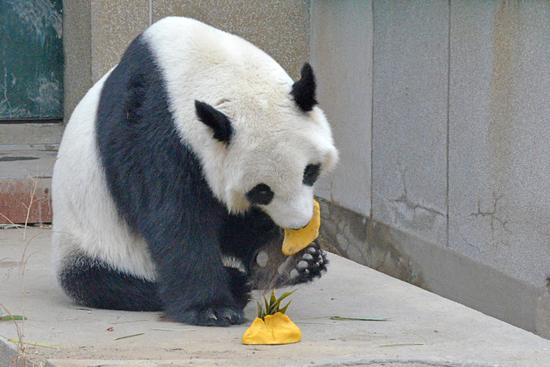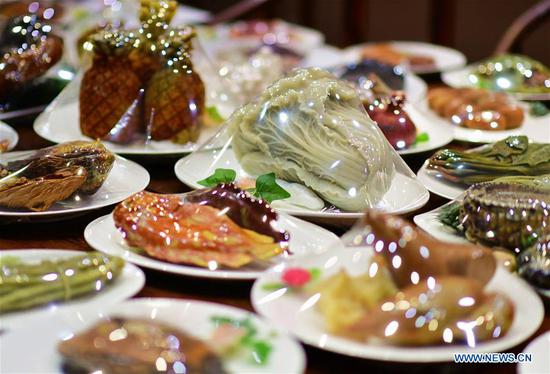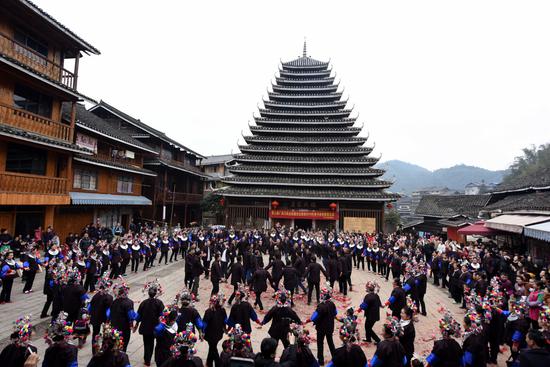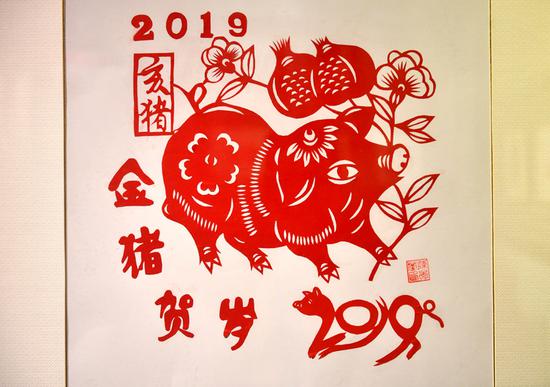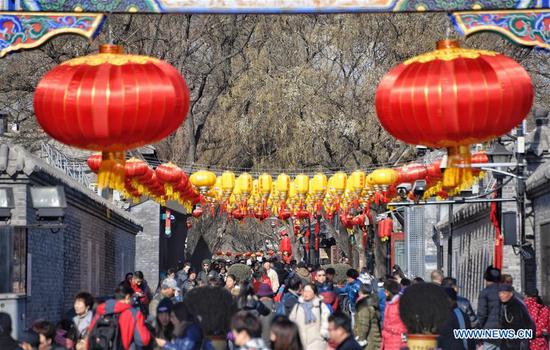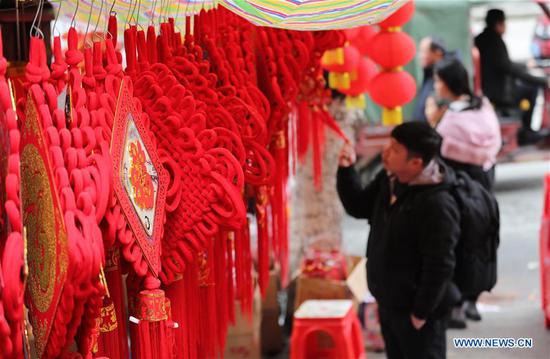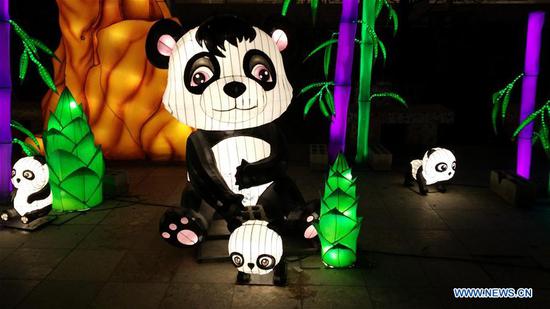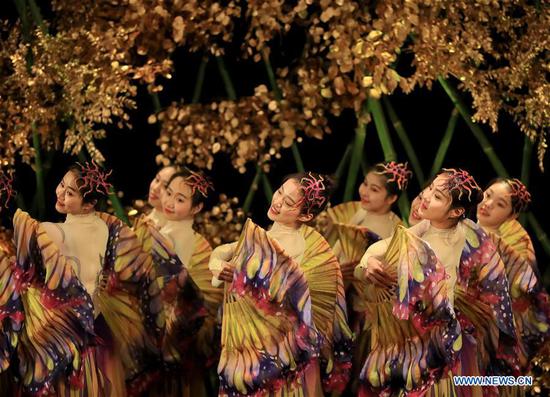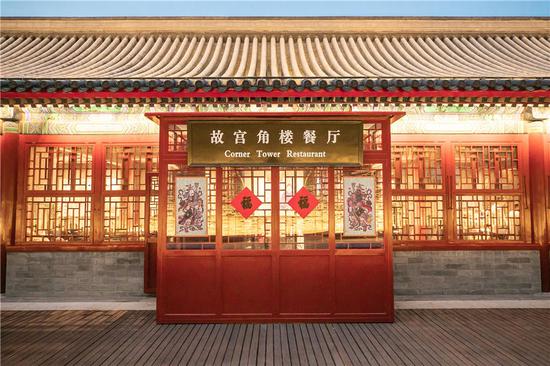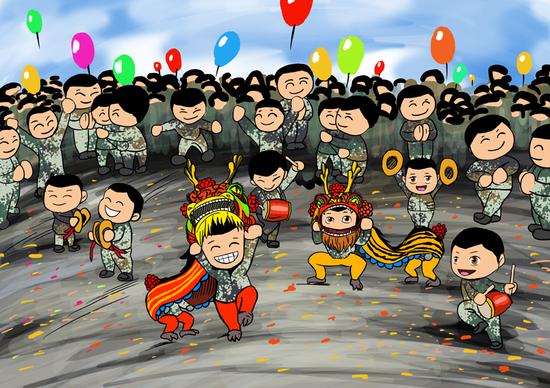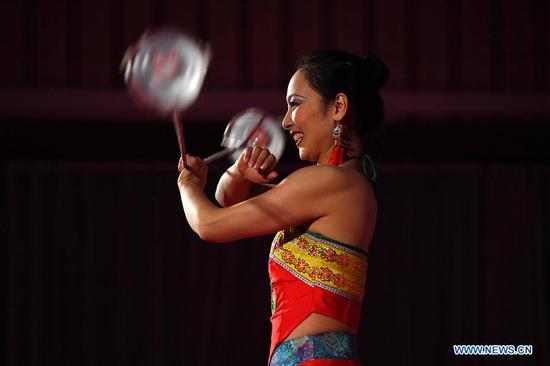
An oracle bone features a character meaning family. The lower part is a hieroglyph for pig. (Provided to China Daily)
One gold hair piece unearthed from the burial ground of a Ming Dynasty (1368-1644) prince in Central China's Hubei features the multi-armed goddess, sitting on a sow-drawn chariot. Set with rubies and sapphires, the glistening headpiece was meant for an aristocratic woman, who may have prayed for her husband's lasting favor.
This tenuous link between Buddhism and the pig was further explored by the Ming novelist Wu Cheng'en, who wrote Xiyouji, or Journey to the West. It was inspired by the true story of Xuanzang, a monk who lived in seventh-century China, who traveled 25,000 kilometers before arriving in India and later returned with loads of Buddhist scriptures. The entire journey took 17 years.
In Wu's rendition, the monk was still there, but the journey was made even more treacherous by the many demons that populated the pages and craved his flesh.
Fear not: the determined man had three disciples who protected him-the resourceful Wukong, aka the Monkey King, the faithful Wujing and the pig-faced, barrel-bellied Wuneng, who had been banished from heaven for flirting with a fairy.
In the novel, the pig-man was portrayed almost as an antithesis to everything considered devout or virtuous.
A lecherous gourmand who tended to waver in times of difficulty, he nevertheless managed to complete the journey and was re-sanctified by the Buddha.
This hilarious image was canonized in Chinese literature thanks to the tremendous success of the book, both at the time of its publication and later. (This success is partly evidenced by archeological discoveries, including a Ming Dynasty porcelain pillow painted with a scene from the novel.)
"When the book was introduced to the West, the pig-man became an instant hit," Shi says. "Of all the main characters of the book, he is the most down to earth. The fact that he had to make a constant effort to resist temptation sounds familiar to every one of us."
At the very end of the book, the pig-man, elevated again to the rank of immortal, was-unlike humans-finally able to part with his worldly urges.
People have always sought wealth and power, things the ancient Chinese believed the pig could help humans obtain.
Zhu, the Chinese word for pig, is pronounced the same as red. And when ancient Chinese took the palace examination, in which good performance would often mean entry into the country's bureaucracy, their papers were marked by the emperor wielding a brush dipped in red.
Consequently, it was common for everyone who wanted to trot up the ladder of promotion to eat pigs' feet.
Times change, but pigs' feet braised in soy sauce never lost its charm or its position in Chinese cuisine.
Most of the diners are sure to be blithely ignorant of the fact that in Chinese history there were cases when during war, burning pig fat were tied to the front of arrows and launched onto enemy ships.
But many have heard about collagen protein. Pork-especially the feet and skin-is rich in the substance that's believed to maintain skin elasticity and help in the-Alas!-unwinnable fight against aging.
It is easy to dismiss our society's obsession with being young and beautiful or the desire to marry into wealth. But it is not so easy to turn down a hearty pork dish-tender, flavorful and seasoned with history and the familiar taste of home.










